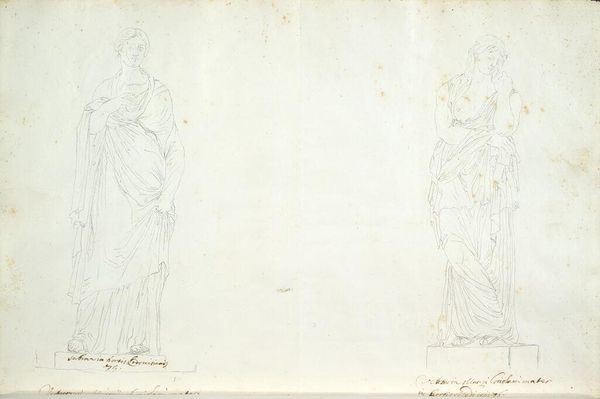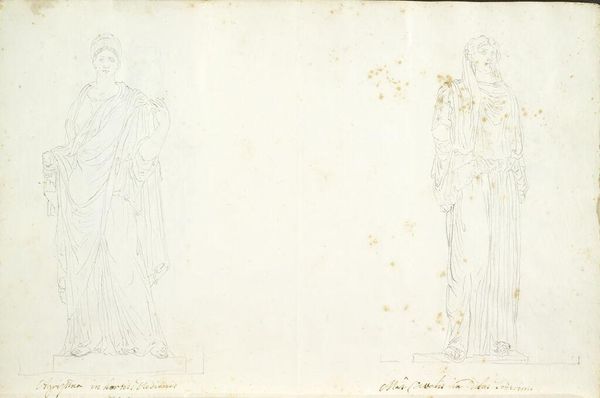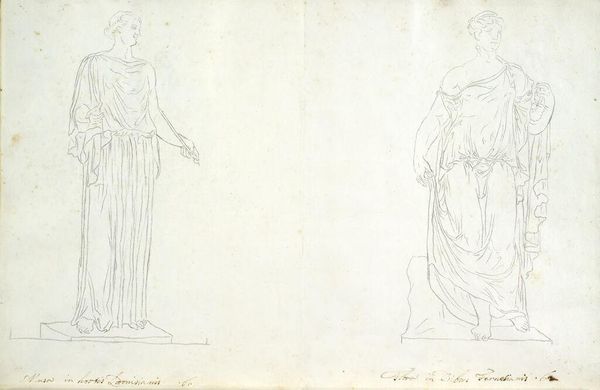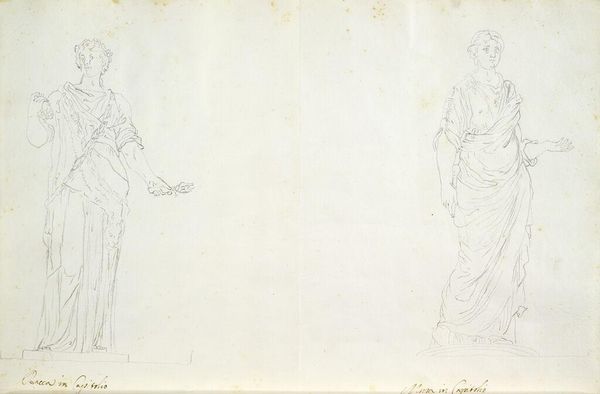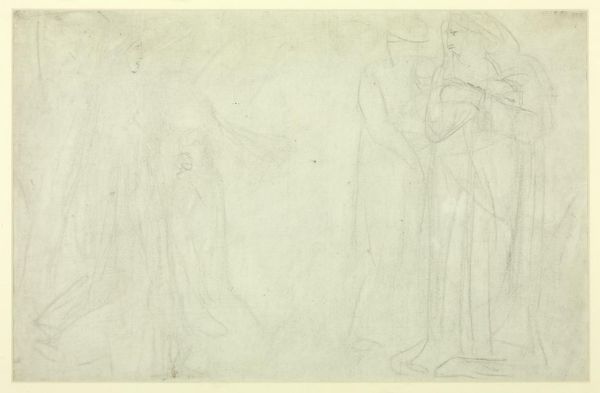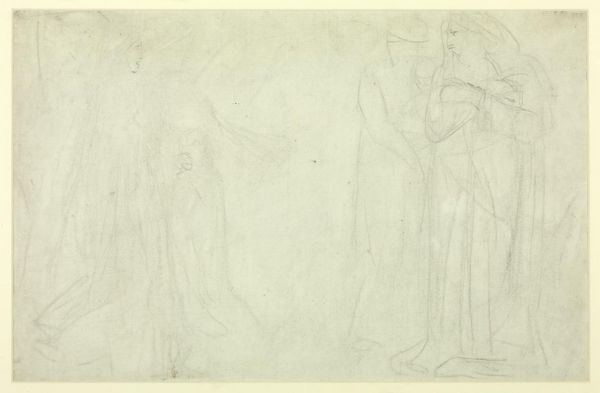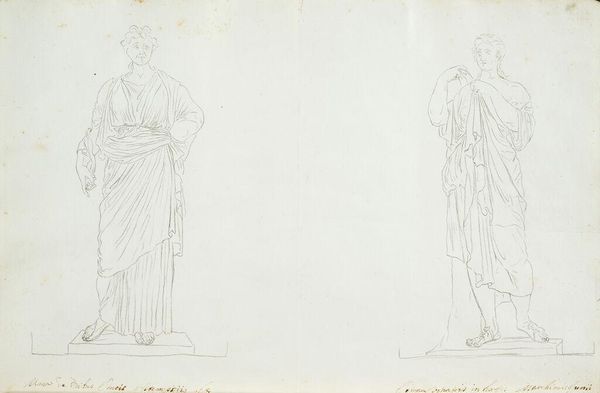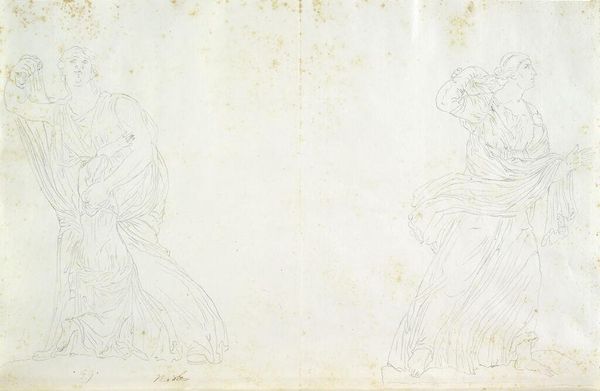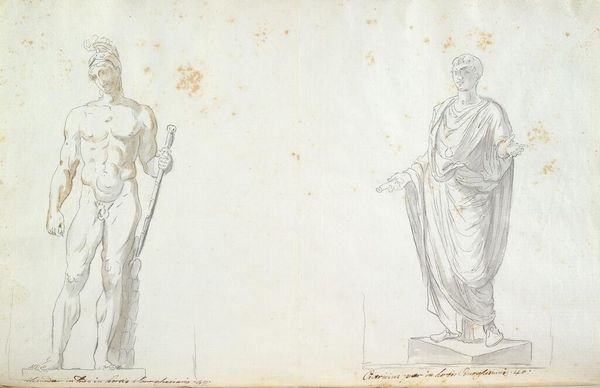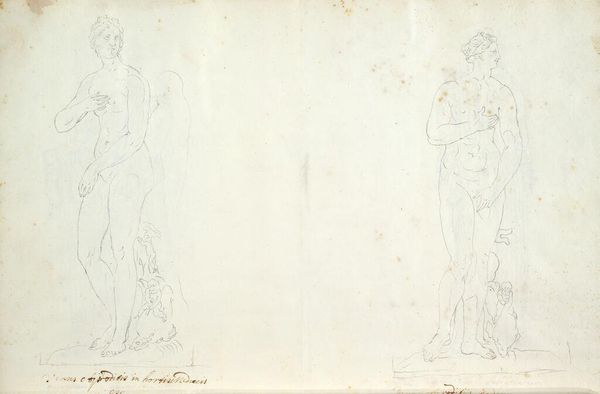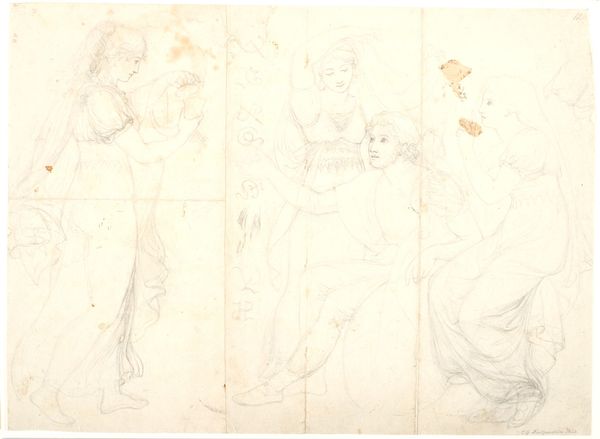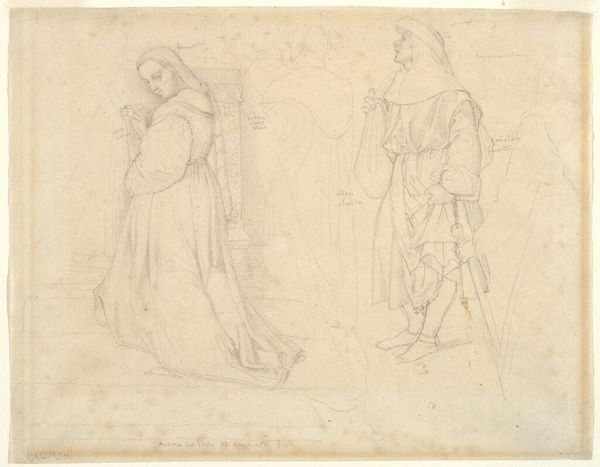
Borghese Ceres and Medici Sybil c. 17th century
Dimensions: 27 x 39.5 cm (10 5/8 x 15 9/16 in.)
Copyright: CC0 1.0
Curator: Here we have a drawing titled "Borghese Ceres and Medici Sybil," an anonymous work in the collection of the Harvard Art Museums. Editor: It feels almost ghostly, these faint figures emerging from the aged paper. I wonder what sort of pencil or stylus left these delicate lines? Curator: Well, the drawing depicts two classical sculptures. Ceres, Roman goddess of agriculture, and a sibyl, a figure of female prophecy. These were common subjects for artists to study, of course. Editor: Yes, but the labor involved in reproducing these sculptures, the repetition, speaks volumes about artistic training at the time. It wasn't about individual expression, but about mastering established forms and materials. Curator: Perhaps, but I also see the ghost of the artist's hand, tracing those lines, trying to capture some essence of the divine feminine. There's a quiet reverence here, a seeking. Editor: I agree, but the paper itself is telling a story, too. It's fragile, stained, a testament to the slow passage of time and the art-making process itself. Curator: It’s interesting to think about how this drawing was created and used, if it was intended as a study, a record, or something else entirely. Editor: Exactly, the beauty lies in understanding the work, the process, the history—not just in some idealized vision.
Comments
No comments
Be the first to comment and join the conversation on the ultimate creative platform.
